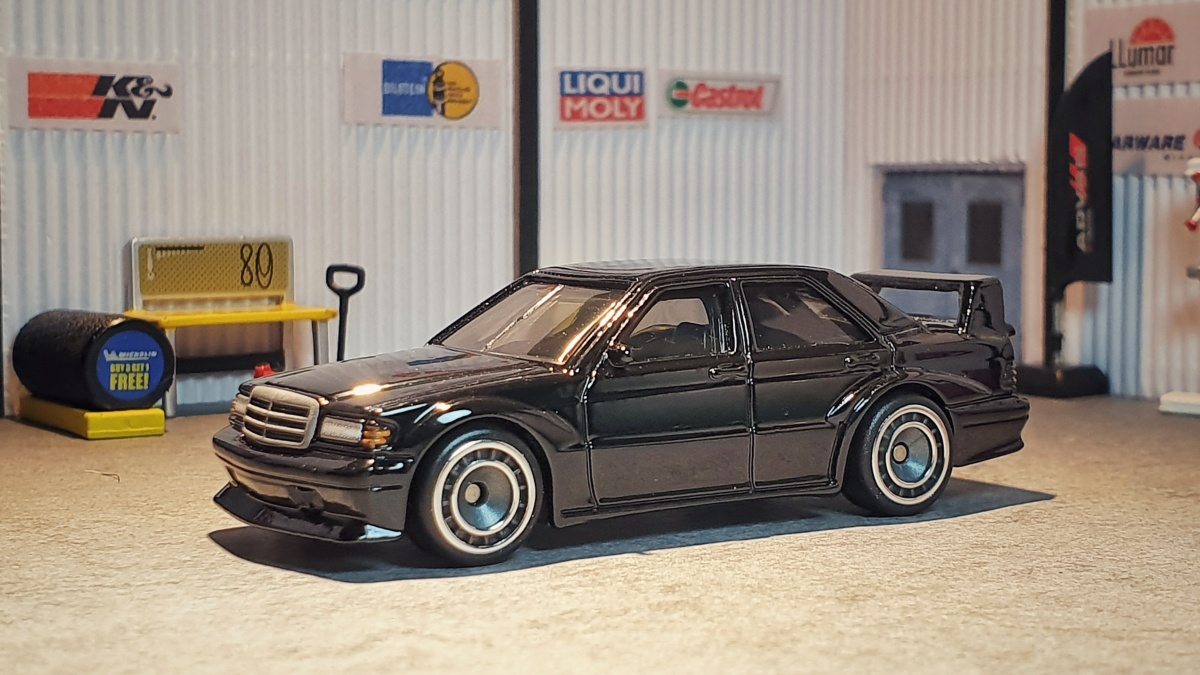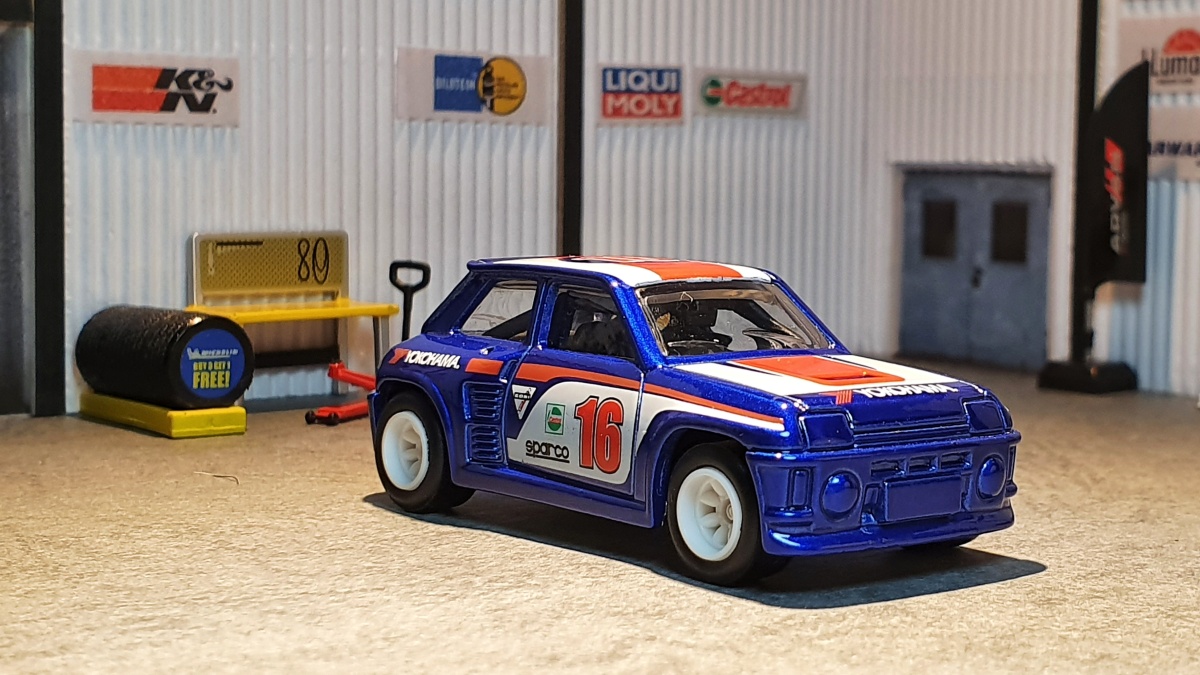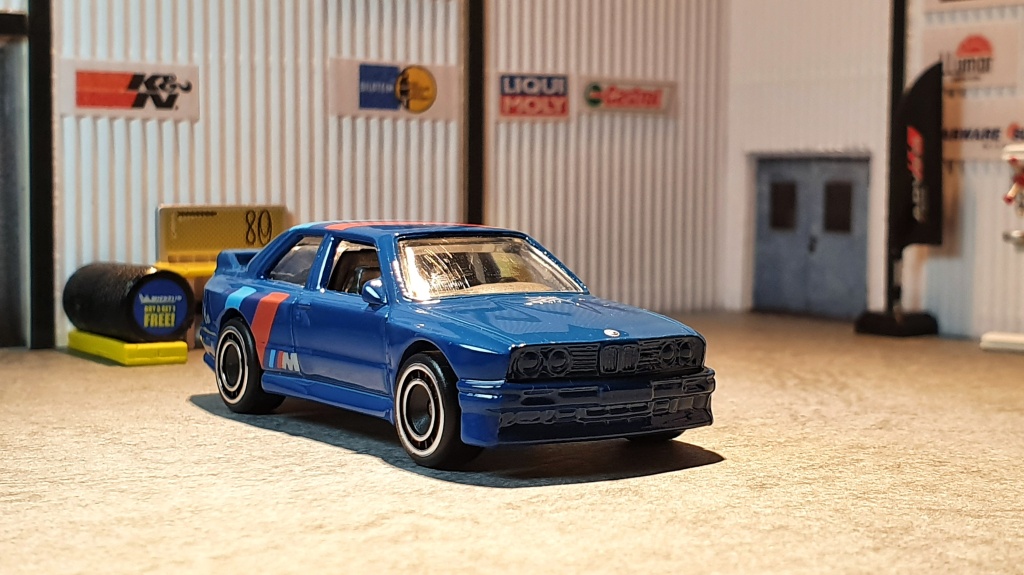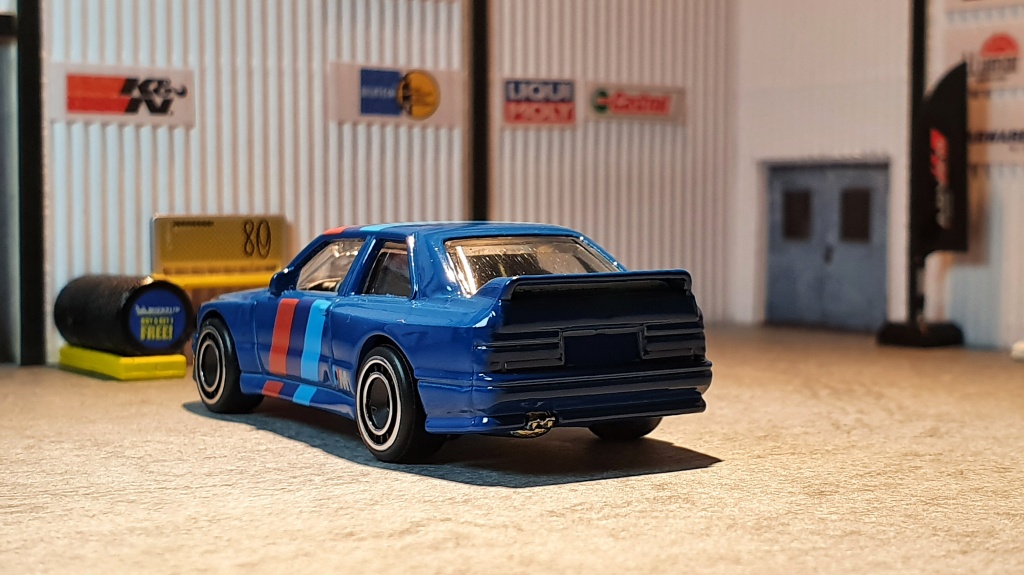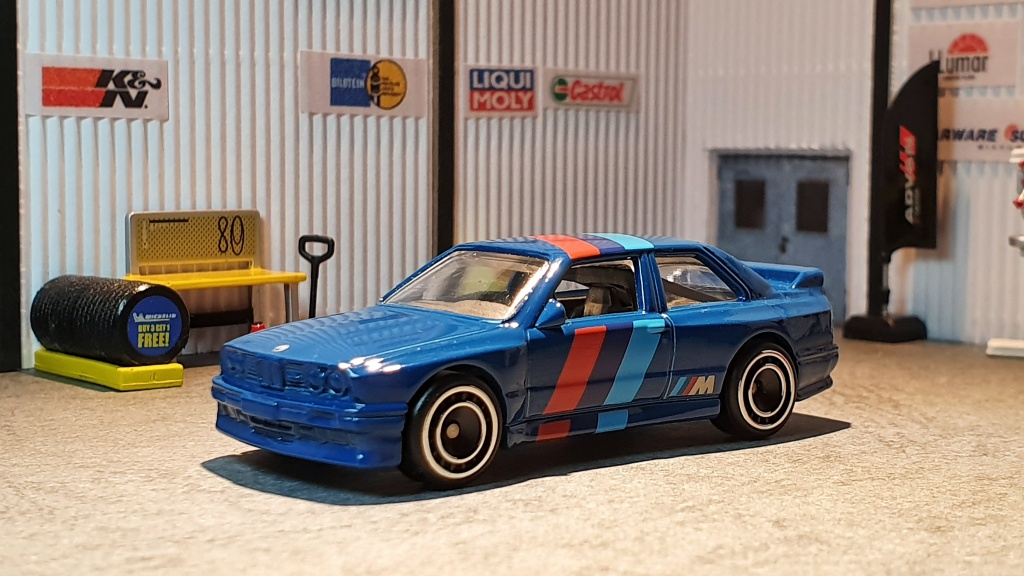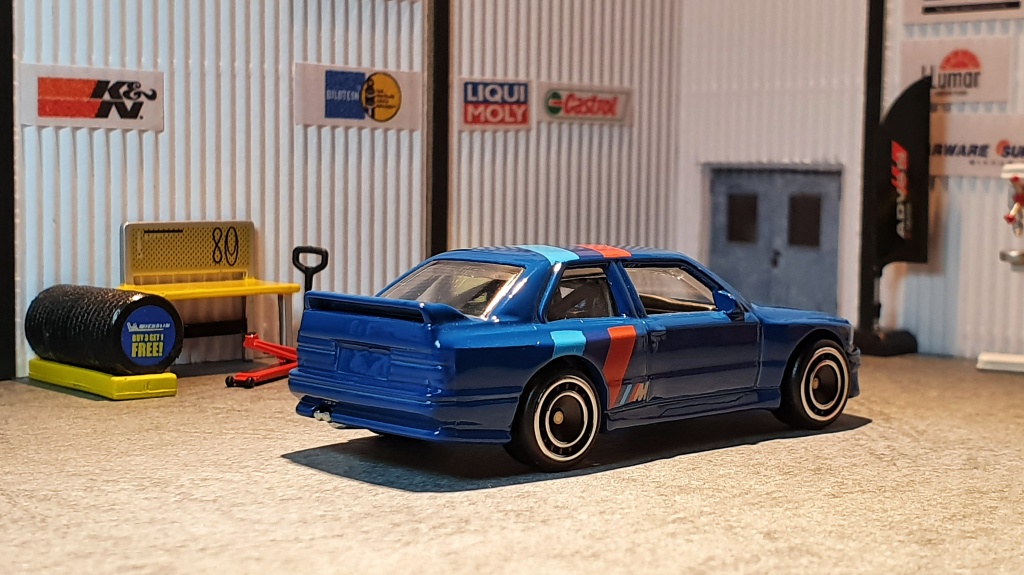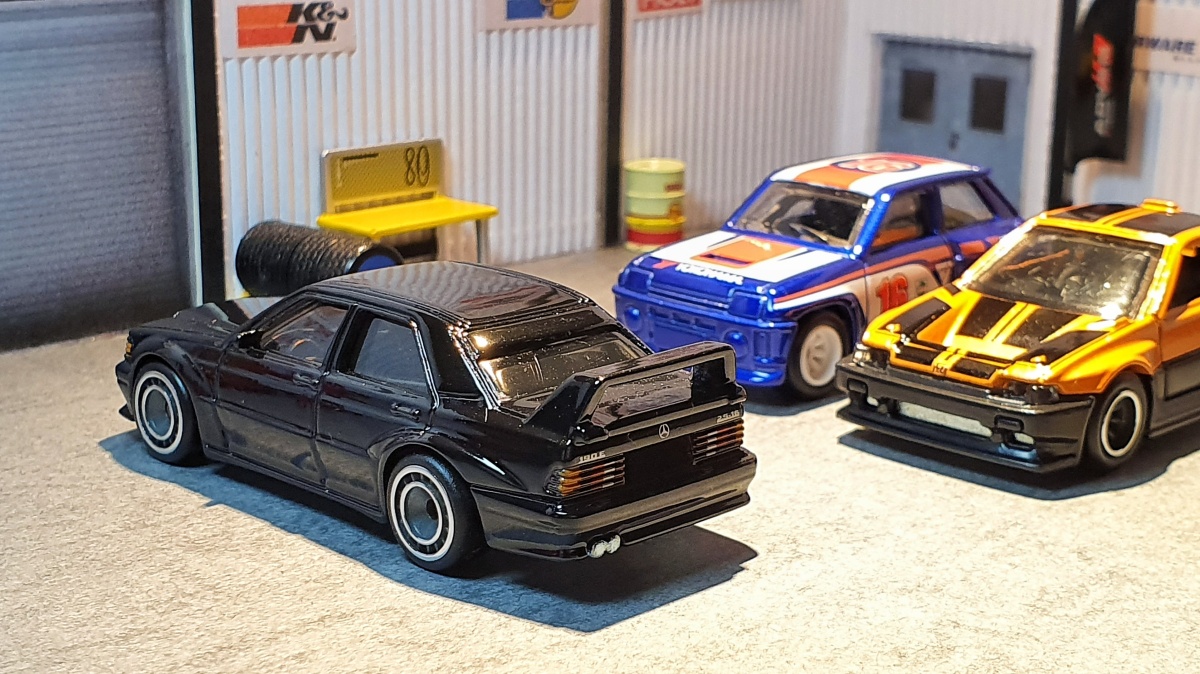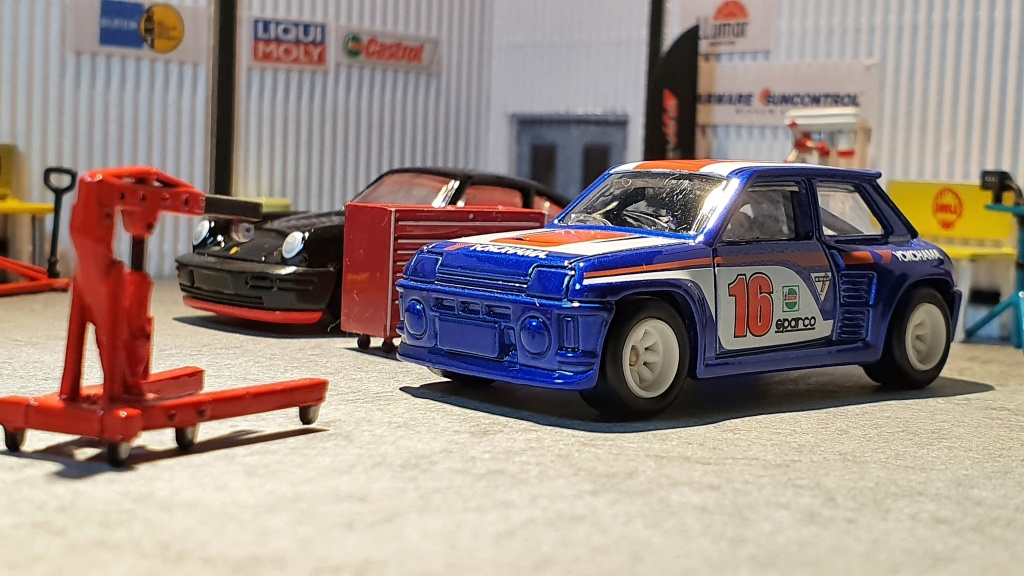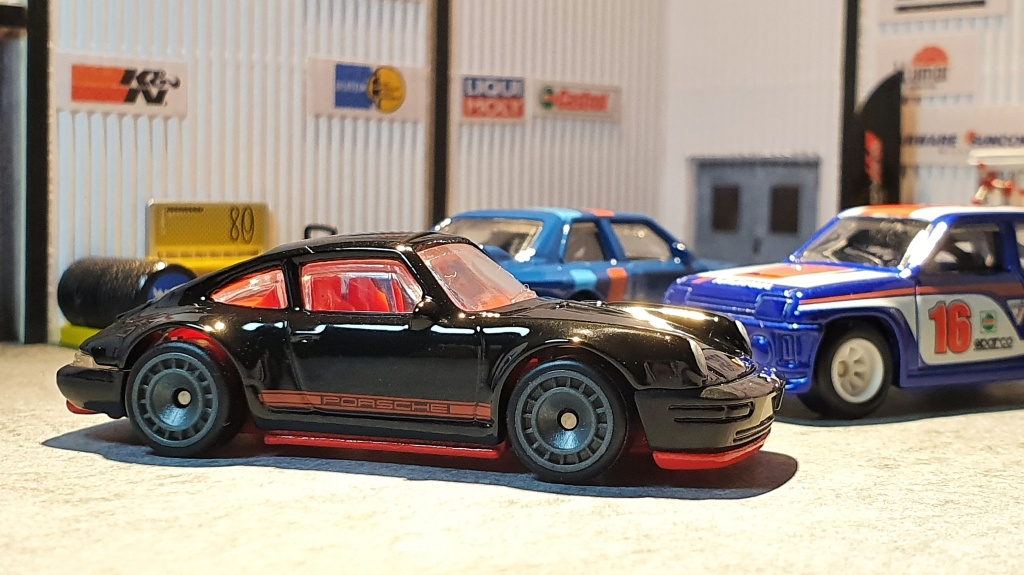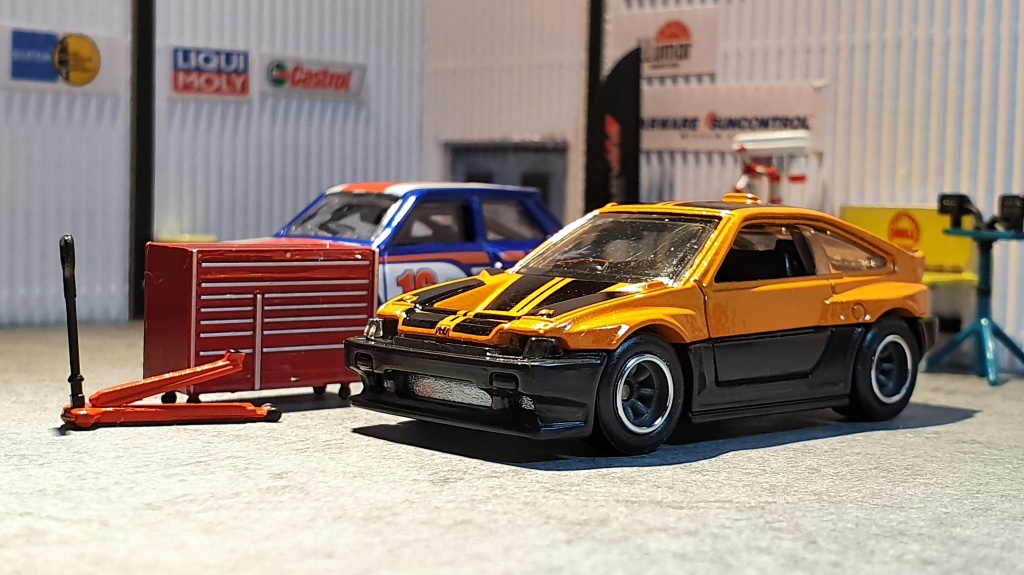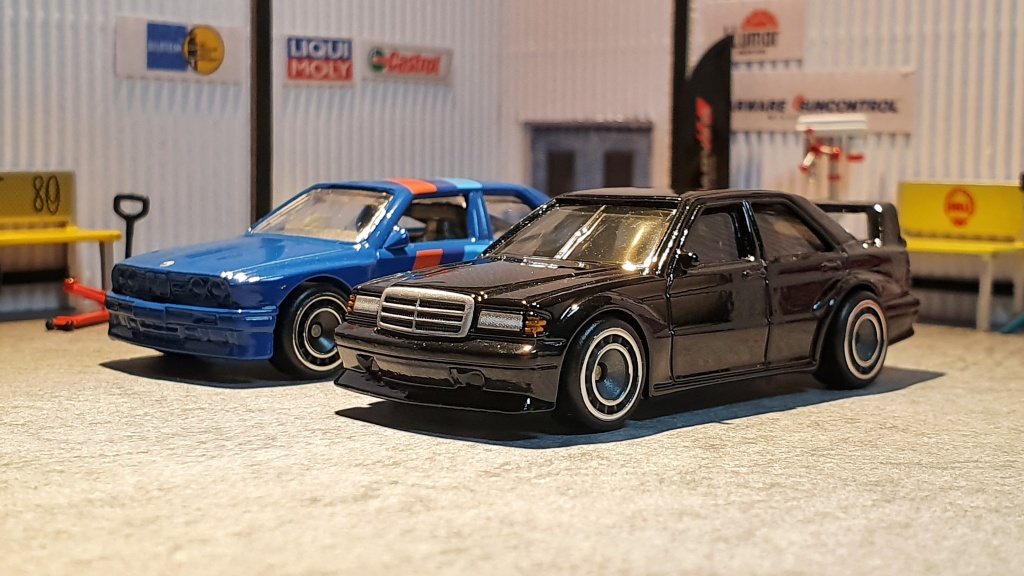The crème de la crème. The main reason I bought this set in the first place is because this is the first appearance of the Mercedes-Benz 190E 2.5-16 EVO II. A mouthful, yes, but it is all to differentiate it from its brethren.
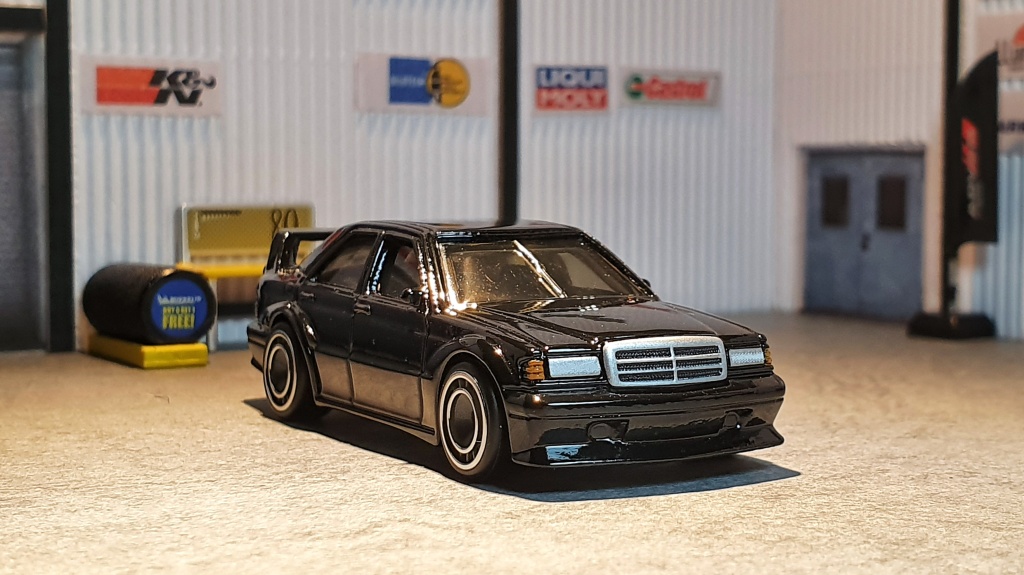
The EVO II was given a big performance boost by AMG in terms of engine performance. It also benefited from a radical body kit which at that time was rather uncharacteristic of a Mercedes. It had a rear window spoiler in addition to an adjustable rear wing, which, people at the time described as huge. All of these are nicely reproduced by Hot Wheels in the casting of the 190E.
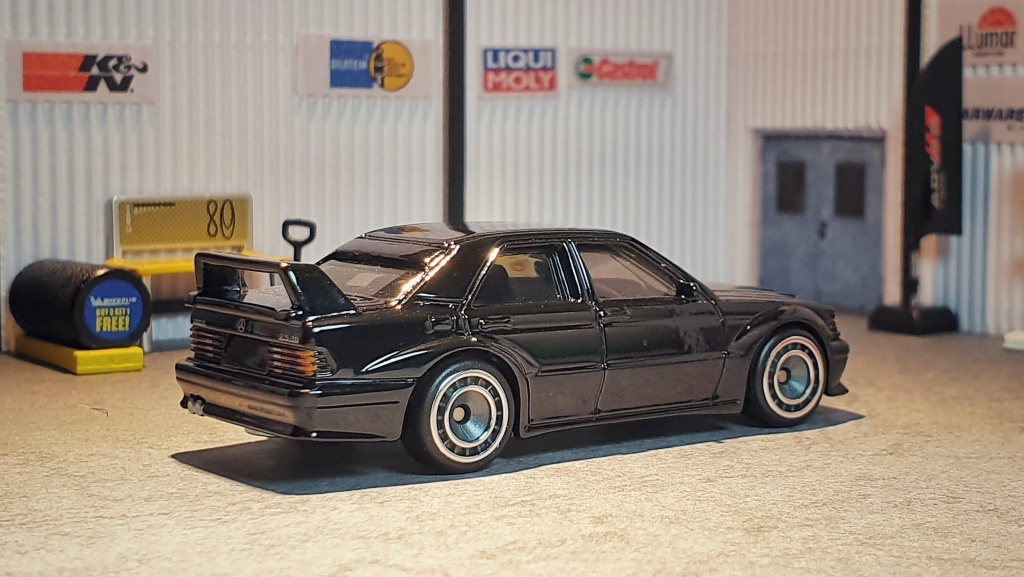
The Hot Wheels casting had to come in black. There is just no other color for this car than black, to be honest. It makes all of the smaller details pop such as the headlights, taillights, and front grill. You will also notice the casting itself has put the compulsory wings at the rear, the bulges on the fenders, and the front lip spoiler as well. Dual tailpipes make for a nice rear-end too. Look closer and you will notice it only has one windscreen wiper in the middle, very DTM. It also has no front passenger seat and the rear seems to have been molded to have no rear seats as well. While the RRA wheels may not be up to spec, the chrome trim on them makes them look proper. It is a very well designed package and we have Mark Jones to thank for this black beauty.

This is definitely a keeper and it will hold a special place in my collection of Hot Wheels cars. Because it became such a hit, the casting has come out in other series releases as well including Team Transport. The Falken livery on that car is fantastic looking, but this black beauty is still the one to have if you are going to have only one of this in your collection.
